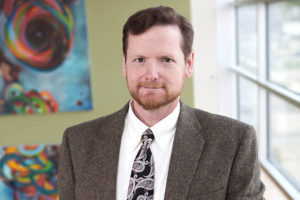Tainted Money and Tainted Donors: A Growing Crisis?


In this piece from our 11 Trends in Philanthropy for 2020 report, Moody and Pratt see the opportunity for a more complex and sophisticated conversation about the ethics of philanthropy.
 Just about every major arts institution — from the Guggenheim to the Louvre — has received sizable funding from the Sackler family. Until recently, this arts patronage was how most people knew the Sackler name — if they knew it at all.
Just about every major arts institution — from the Guggenheim to the Louvre — has received sizable funding from the Sackler family. Until recently, this arts patronage was how most people knew the Sackler name — if they knew it at all.
But the Sacklers, and their company Purdue Pharma, makers of the addictive painkiller OxyContin, are now becoming much better known for a different reason — their aggressive marketing of the drug despite its known dangers, and their complicity in fueling the nation’s deadly opioid epidemic. Museums with a Sackler-named wing, and other nonprofits supported by the Sackler family, now find themselves facing tough questions and ethically complex choices (Singer, 2019).
Unfortunately, the Sackler family’s fall from grace is not an isolated case. New examples of this sort of “tainted donor” or “tainted money” problem seem to keep popping up: the boiling controversy over financier and convicted sex offender Jeffrey Epstein’s contributions to MIT’s Media Lab, and the Lab’s handling of this uncomfortable fact (Binkley, 2019); the University of Southern California’s rejection of a $5 million gift from former film producer and accused sexual predator Harvey Weinstein, meant to support female filmmakers (Helge, 2018); and questions about the prominent board seats occupied by tear gas-maker Warren Kanders (Halperin, 2019). In some circles, the “cleanliness” of any money gained through current, predatory capitalist practices should be considered suspect (McGoey, 2015).
All of this puts the nonprofits who depend to varying degrees on private donations in an ethically complicated spot.
These concerns harken back to ethical questions raised about major philanthropists in the past, such as the famous controversy over John D. Rockefeller’s gift to the missionary arm of the Congregationalist Church in 1905 (Mislin, 2019). In fact, the term “tainted money” was popularized in that debate, mainly by Congregationalist minister Washington Gladden. Gladden was the leading voice for rejecting Rockefeller money because of concerns over how it was made (Soskis, 2017).
Even at that time, ethical opinions were mixed about whether charities should accept tainted money. William Booth, founder of The Salvation Army, is often quoted as saying at the time, “the problem with tainted money is there t’aint enough!” Whether Booth actually said that or not, we know he was strongly in favor of accepting such money, saying tainted money was “washed clean” when used for the greater good (Winston, 1999).
“In today’s hyper-connected world, concerns about supposedly tainted donors or money are more easily raised and more rapidly spread.”
In today’s hyper-connected world, concerns about supposedly tainted donors or money are more easily raised and more rapidly spread. Yet nonprofits and donors have never really developed a sophisticated way of addressing the thorny ethical questions raised in these cases. And this might be the silver lining in the current wave of controversies. They can force us to think and debate more deeply about the ethics of giving and receiving, and to develop better conceptual tools for handling these sorts of challenges in our field.
To do so, we first need to better understand these challenges and their context.
First, what exactly “taints” the money or the donor, and what variations are there in these claims? The distinction between tainted money (problems with how money was created) and tainted donors (problems with who is giving money) seems a primary one to clarify. Also, are there variations in severity that might matter — e.g., the stigma attached to donors accused of child abuse might be more problematic than that attached to donors accused of not paying their workers a living wage? And perhaps most important, who gets to decide whether a certain donation or donor is tainted or not?
Beyond these conceptual questions, and even more urgent, are the practical questions, especially for nonprofits — questions about the range of possible responses, the process of deciding how to respond, and protocols to preempt or mitigate the risk of future tainted donations. What choices do nonprofits have beyond just refusing or returning the donation (Dunn, 2010)? And who should be consulted? How should the decision be communicated, especially when the ethical questions are blurry or disputed? What policies or procedures should nonprofits adopt to guard against the risk posed by tainted money and donors?
There are some resources in the field to help nonprofits and donors find their way through this ethical thicket. Nonprofit membership and philanthropy support organizations, like Independent Sector and the Association of Fundraising Professionals, have Codes of Ethics that address the tainted money/donor issue (Independent Sector, 2015; Association of Fundraising Professionals, 1964). But while useful, these often do not provide explicit advice for nonprofits who find themselves facing this sort of challenge. U.S. nonprofits can find some guidance by looking to the U.K., where regulators have developed some detailed, actionable guidelines for how and when to accept (or reject) a donation (Charity Commission for England and Wales, 2018; Fundraising Regulator, 2019).
Examples of practices that would enable nonprofits to anticipate, mitigate, and/or respond to this challenge include investing more resources in vetting donors, creating standing ethics committees, and developing and implementing formal policies and procedures for accepting (or rejecting) donations (Rendon, 2019). These policies and procedures address variables like how the extent of due diligence might change with a gift’s size, the conditions under which a donation should be rejected, and contingency plans for when a previously accepted donation becomes tainted.
“Context matters in every case. What is ‘right’ might depend on many factors of the situation and the parties involved.”
Finally, we need to always remember that establishing general policies and procedures is not enough to find our way through these ethical quagmires (Levine, 2019). Context matters in every case. What is “right” might depend on many factors of the situation and the parties involved. For example, might oil companies be considered tainted donors to environmental organizations, but not so much to arts ones? Will an organization on the brink of insolvency be more willing to accept suspect donations just to keep its doors open? And if a nonprofit has accepted donations from a donor repeatedly in the past, does this change their decision about whether to continue to accept donations when new allegations are made against that donor?
Whatever the specifics, we know these sorts of tainted money and tainted donor questions will continue to arise, and will continue to trouble both nonprofits and the donors who support them. We should use this trend as an opportunity to have a more complex and sophisticated conversation about the ethics of philanthropy. This better conversation will help all parties around the philanthropic table be more accountable and have greater impact.


Association of Fundraising Professionals. (1964). AFP Code of ethical principles. Retrieved from https://afpglobal.org/ethicsmain/code-ethical-standards
Binkley, C. (2019, September 9). MIT scandal highlights thorny ethics of university donations. AP News. Retrieved from https://apnews.com/8f48e18ee46b40ae8edda9d89845f087
Dunn, P. (2010). Strategic responses by a nonprofit when a donor becomes tainted. Nonprofit and Voluntary Sector Quarterly.
Charity Commission for England and Wales. (2018, May 3). The essential trustee: What you need to know, what you need to do (CC3). Retrieved from https://assets.publishing.service.gov.uk/government/uploads/system/uploads/attachment_data/file/842041/CC3_may18.pdf
Fundraising Regulator (United Kingdom). (2019). Code of fundraising practice. Retrieved from https://www.fundraisingregulator.org.uk/code/all-fundraising/responsibilities-charitable-institutions#accepting-refusing-and-returning-donations
Halperin, J. (2019, July 17). In an age of political division and dirty money, can museum boards ever be immaculate? Some think they have found a solution. Retrieved from https://news.artnet.com/art-world/boards-museums-money-2019-1600507
Helge, T. (2018, August). It’s harder than you might expect for charities to give back tainted money. Retrieved from https://www.huffpost.com/entry/its-harder-than-you-might-expect-for-charities-to_b_5b689f42e4b08c2f0a5e10ca
Independent Sector. (2015). Principles for good governance and ethical practice: A guide for charities and foundations (2nd ed.). Retrieved from https://independentsector.org/wp-content/uploads/2016/11/Principles2018-Final-Web.pdf
Levine, M. (2019, November 4). New donor ethics rules: Why policies and procedures alone can’t protect us. Nonprofit Quarterly. Retrieved from https://nonprofitquarterly.org/new-donor-ethics-rules-why-policies-and-procedures-alone-cant-protect-us
McGoey, L. (2015). No such thing as a free gift: The Gates Foundation and the price of philanthropy. Brooklyn, NY: Verso.
Mislin, D. (2019). How a 1905 debate about ‘tainted’ Rockefeller money is a reminder of ethical dilemmas today. The Conversation. Retrieved from https://theconversation.com/how-a-1905-debate-about-tainted-rockefeller-money-is-a-reminder-of-ethical-dilemmas-today-124068
Rendon, J. (2019, September 19). How to protect your nonprofit from controversial donors. Chronicle of Philanthropy. Available at https://www.philanthropy.com/article/How-to-Protect-Your-Nonprofit/247176
Singer, P. (2019, February 7). Dirty money and tainted philanthropy. NewEurope. Retrieved from https://www.neweurope.eu/article/dirty-money-and-tainted-philanthropy
Soskis, B. (2017, August 22). Gift Horse or Trojan Horse? The American Prospect. Retrieved from https://prospect.org/labor/gift-horse-trojan-horse
Winston, D. (1999). Red-Hot and Righteous: The Urban Religion of The Salvation Army. Cambridge, MA: Harvard University Press.